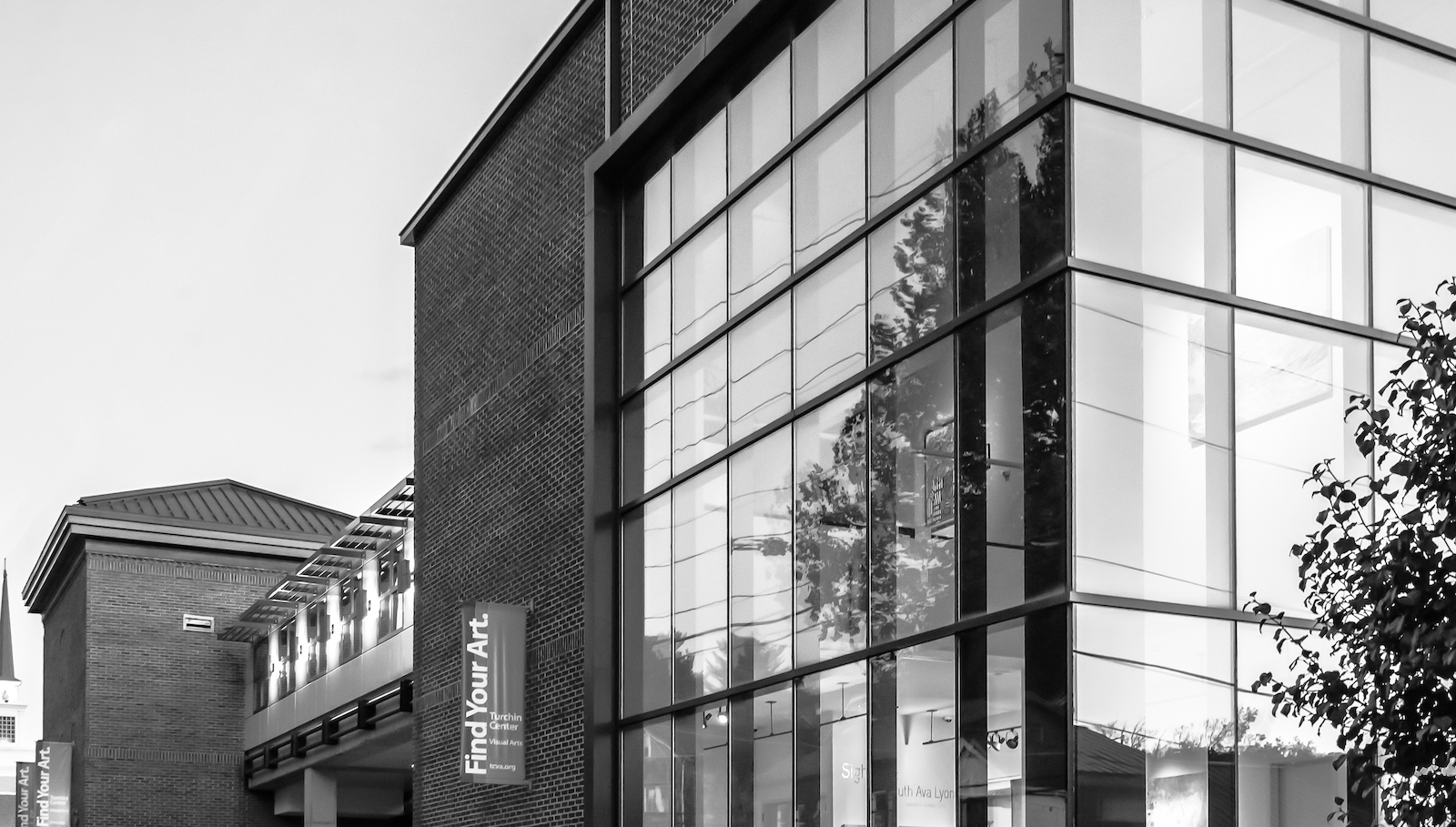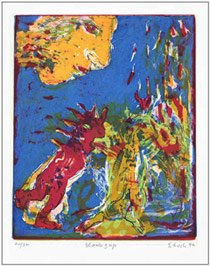Kristallnacht – Night of the Crystal Death is a portfolio of ten works – published in North Carolina by Littleton Studios in Spruce Pine – that confront the horror of a nationwide pogrom against German Jews that took place on the night of November 9, 1938. This important and challenging group of works provided artist Erwin Eisch with an opportunity to confront a horror from his homeland’s past. Eisch, who has childhood memories of Kristallnacht, hails from the Eastern Bavarian village of Frauneau, famed for its glass blowing and cutting. Eisch’s medium is also glass, and he has created his Kristallnacht portfolio as a means to “relieve some of the clinging shame that weighs down upon us Germans, and to bring courage to all those who oppose hate and violence and the destruction of the environment, today and forever.”
Eisch says, “I was twelve years old when windows broke and synagogues were set on fire during the Crystal Night. I remember that our family talked about this crime with disgust and quaking fear. There were no Jews in the glassblowing village of Frauenau at that time. The news of the bloody events came to us via acquaintances. I can still feel that fear, and that is the reason why I was so glad to tackle this issue.”
The horrific attack, which was orchestrated by the German government to seem a spontaneous uprising of the German people, portended the Holocaust. Nearly all German synagogues, and many cemeteries and Jewish businesses, were destroyed within a few hours, and up to an estimated 2,500 deaths are attributed to the event, either from direct riot violence or the resulting 30,000 arrests and concentration camp internments of German Jews. The name Kristallnacht itself is a source of some controversy, because the term connotes the original sardonic intent of Nazi propagandists to associate the events which, for most Germans, comprise a repulsive piece of history, with a glamorous metaphor.


Blowing Up by Erwin Eisch (1991). Intaglio vitreograph on paper, edition of 50.
About the Littleton Collection
Overlooking the Indian River in St. Lucie County, Florida, The Littleton Collection is perched on a sand ridge on the east side of U.S. 1 nine miles south of Vero Beach and three miles north of Fort Pierce. The Littleton Collection is literally and figuratively a high spot in south central Florida. Its view of the Indian River lagoon and the barrier island beyond is as spectacular as the contemporary artworks the gallery offers.
The gallery is the creation of Harvey K. Littleton, the renowned glass artist who has been called the father of the American studio glass movement. Littleton’s glass sculptures are featured in the Littleton Collection along with works by his contemporaries, including Dale Chihuly, Erwin Eisch, and Stanislav Libenski.
In addition to contemporary glass the gallery has an extensive inventory of 19th and 20th century art glass, including rare pieces from famous factories: Daum, Galle, Loetz, Moser, Orrefors, Schneider, Stueben, and Tiffany.
The Littleton Collection’s selection of fine prints specializes in a printmaking medium pioneered by Harvey Littleton: vitreography. Simply put, a vitreograph is a print that has been pulled (printed) from a glass matrix onto paper. Unlike a monotype, in which an image is painted onto a piece of glass and then transferred under pressure to a piece of paper, the image on a vitreograph plate is fixed and can be inked and re-inked to produce an edition of multiples.
To date, over one hundred artists have collaborated with Littleton Studios to produce hundreds of print editions using the vitreographic process. A partial listing of these artists includes Dale Chihuly, Warrington Colescott, Nancy Genn, Sergei Isupov, Herb Jackson, Richard Jolley, Stanislav Libenski, Thomas Philabaum, Italo Scanga, Therman Statom, Claire Van Vliet, and Carol Wax.
